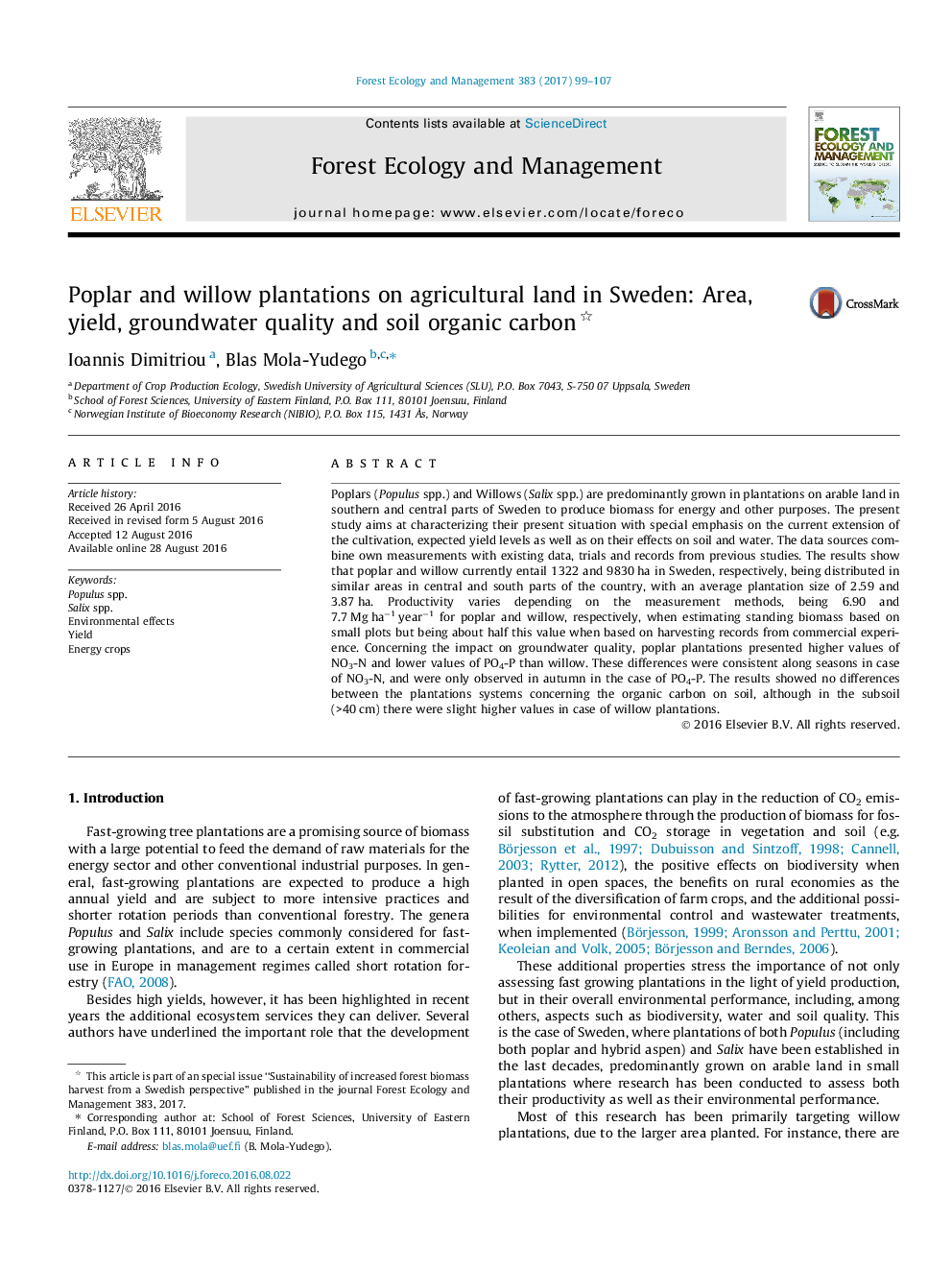| Article ID | Journal | Published Year | Pages | File Type |
|---|---|---|---|---|
| 6459604 | Forest Ecology and Management | 2017 | 9 Pages |
â¢Poplar and willow plantations are assessed and compared.â¢Plot yields 6.9 and 7.7 Mg haâ1 yearâ1 and areas 1322 and 9830 ha for poplar and willow.â¢Poplar plantations presented higher values of NO3-N and lower values of PO4-P than willow.â¢Large regional variations and measurement methods make comparisons difficult.
Poplars (Populus spp.) and Willows (Salix spp.) are predominantly grown in plantations on arable land in southern and central parts of Sweden to produce biomass for energy and other purposes. The present study aims at characterizing their present situation with special emphasis on the current extension of the cultivation, expected yield levels as well as on their effects on soil and water. The data sources combine own measurements with existing data, trials and records from previous studies. The results show that poplar and willow currently entail 1322 and 9830 ha in Sweden, respectively, being distributed in similar areas in central and south parts of the country, with an average plantation size of 2.59 and 3.87 ha. Productivity varies depending on the measurement methods, being 6.90 and 7.7 Mg haâ1 yearâ1 for poplar and willow, respectively, when estimating standing biomass based on small plots but being about half this value when based on harvesting records from commercial experience. Concerning the impact on groundwater quality, poplar plantations presented higher values of NO3-N and lower values of PO4-P than willow. These differences were consistent along seasons in case of NO3-N, and were only observed in autumn in the case of PO4-P. The results showed no differences between the plantations systems concerning the organic carbon on soil, although in the subsoil (>40 cm) there were slight higher values in case of willow plantations.
